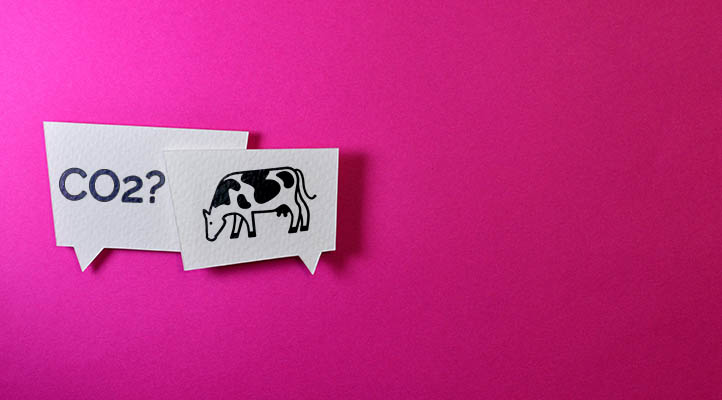Scientists have widely acknowledged that limiting average warming of the global atmosphere to 1.5 degrees Celsius is important to avoid catastrophic climate change and a worsening of its impacts – extreme temperatures, forest fires, flooding, climate refugees, species extinction, etc. In a 2018 report, the International Panel on Climate Change indicated that having a good chance of limiting warming to this level means reaching net zero emissions globally by 2050. This is why national climate commitments, including in Canada and the United States, are now focused on achieving “net zero” by 2050.
What is “net zero”?
There are both sources and sinks of greenhouse gases that cause climate change. Sources include CO2 from the burning of fossil fuels for energy (such as gasoline in cars, natural gas in furnaces, or coal to produce electricity), as well as non-CO2 greenhouse gases such as methane leaking from the production of oil and natural gas, nitrous oxide released from fertilizer, and methane released from enteric fermentation and animal manure on farms.
There are also sinks of greenhouse gases. We know the ocean absorbs CO2, trees, plants and soils take in and store CO2, and there are human-made technologies being created to capture and store CO2 underground, such as carbon capture and storage (CCS) projects in Saskatchewan and Alberta, or direct air capture (DAC) spearheaded by Carbon Engineering in BC.
“Net zero” emissions means that the anthropogenic sources of greenhouse gases are equal to the sinks. This can be achieved in two ways: 1) stop releasing greenhouse gases, such as by using renewable electricity instead of fossil fuels or by capturing emissions at the source (CCS) before they enter the atmosphere; and 2) offset any remaining emissions by taking greenhouse gases out of the atmosphere elsewhere and storing them (for example, using DAC or planting trees).
Net zero is an ambitious target and will not be easy to achieve. The need to avoid or offset all emissions means that every part of our economy – including agriculture – will need to contribute.
Net zero means all emissions must be addressed, not just the easy ones
There are parts of our economy where the path towards net zero emissions is relatively clear. We know we need to use electric vehicles and charge them with clean electricity. We know we need to make our homes more efficient so we’re not wasting energy, and we need to install electric heat pumps to heat and cool them. We know we need to use renewable natural gas or hydrogen fuel instead of natural gas. We know we need to electrify industrial activity where possible to limit the use of fossil fuels. For many sectors, we have solutions available, and the challenge ahead is to implement those solutions at a large scale.
However, there are parts of our economy where reducing emissions is harder and the pathway to doing so is less clear. Agriculture is one of these examples. As long as there are animals living on farms and producing manure, they will be releasing methane. As long as we are fertilizing land to produce crops, nitrous oxide will be released. Because emissions from this sector are challenging to mitigate, and because conversations about food production are politically sensitive, agriculture is a sector that has historically been left behind by climate action.
Provincial carbon taxes have excluded or provided exemptions for farmers (such as in British Columbia and Alberta), and there is a push to do the same with the federal carbon tax. In BC, the province with arguably the most comprehensive strategy to reduce emissions, called CleanBC, there are plans to capture methane from agricultural waste, but no specific policies or requirements have been implemented. Canada’s newest climate plan, A Healthy Environment and A Healthy Economy, includes promises of investment for clean technologies in agriculture, but no specific solutions have been proposed. The most recent comprehensive report on how Canada can achieve net zero emissions (by the Canadian Institute for Climate Choices) does not address agriculture. This is going to need to change as we get serious about the net zero target.
A recent report by the International Energy Agency outlines how to achieve net zero emissions globally and identifies agriculture as a challenging sector (page 92/93):
“Non‐CO2 emissions from livestock, as well as other agricultural emissions, may be more difficult to mitigate… Changes to farming practices and technology improvements, including changes to animal feed, could help to reduce these emissions, but it may be necessary to use afforestation to offset these emissions entirely. An alternative could be to reduce these emissions by reducing the demand for livestock products.”
Any promising plan to achieve net zero emissions is going to need to accept and address the challenging reality of agricultural emissions. (See this book review for more discussion of agriculture and the climate crisis)
Agricultural emissions will become increasingly important
In Canada, agriculture is currently directly responsible for 8% of greenhouse gas emissions (this includes only non-energy greenhouse gas emissions related to the production of crops and livestock). This is expected to increase as Canada moves towards net zero. Due to population growth between now and 2050, and the associated increase in food production requirements, emissions from this sector will continue to increase, while emissions from other sectors are projected to decline as a result of climate policy. Even if abatement actions are taken to hold emissions from agriculture at the current level, this sector will become a proportionally much larger contributor to Canada’s emissions over time as other sectors work to reduce emissions to zero.
For a long time, agricultural emissions have been largely ignored by climate policy because there is no clear roadmap for reducing emissions in this sector. It won’t be as simple as buying an electric vehicle or installing a windmill. Reducing emissions from agriculture means rethinking the way we produce food, and likely what food we are producing. Agricultural emissions are dominated by livestock, and as such, reducing or eliminating animal agriculture is one promising pathway to limiting emissions from this sector.
The nature of net zero means agricultural emissions can no longer be ignored, and leads us to question whether current methods of food production are compatible with this target. An increasing number of studies (such as this one, this one, and this one) make it clear that addressing animal agriculture is key to mitigating climate change. If we are going to achieve net zero, agriculture must become part of the conversation.
Photo by Miguel Á. Padriñán from Pexels




